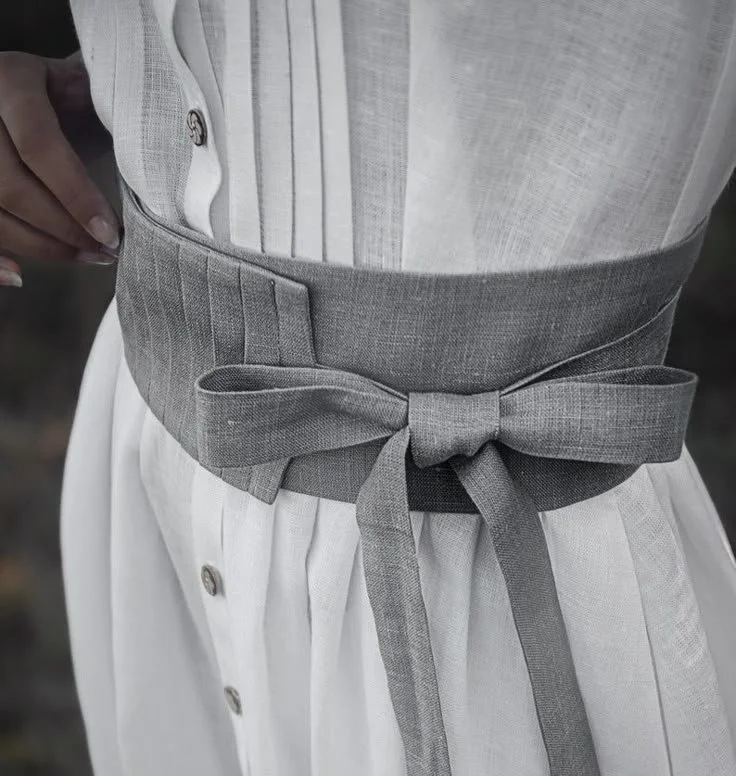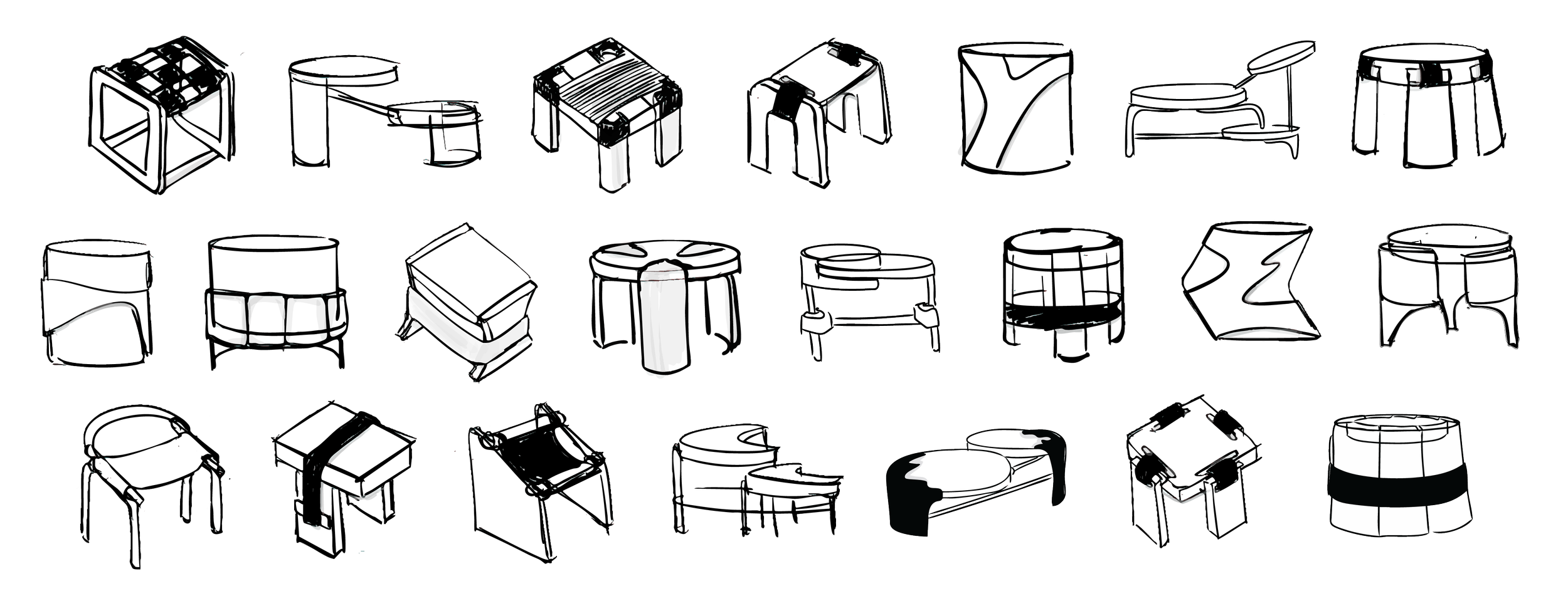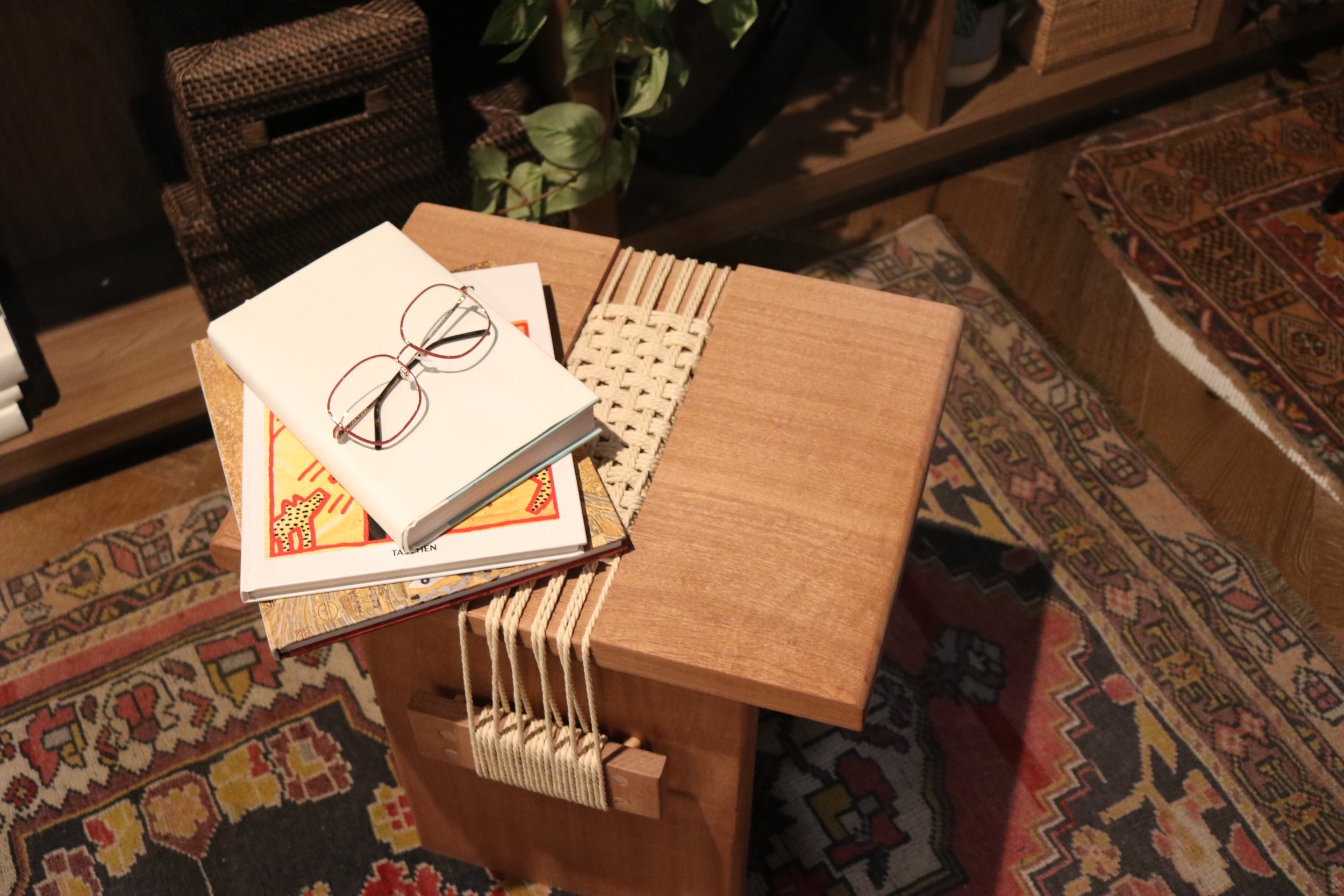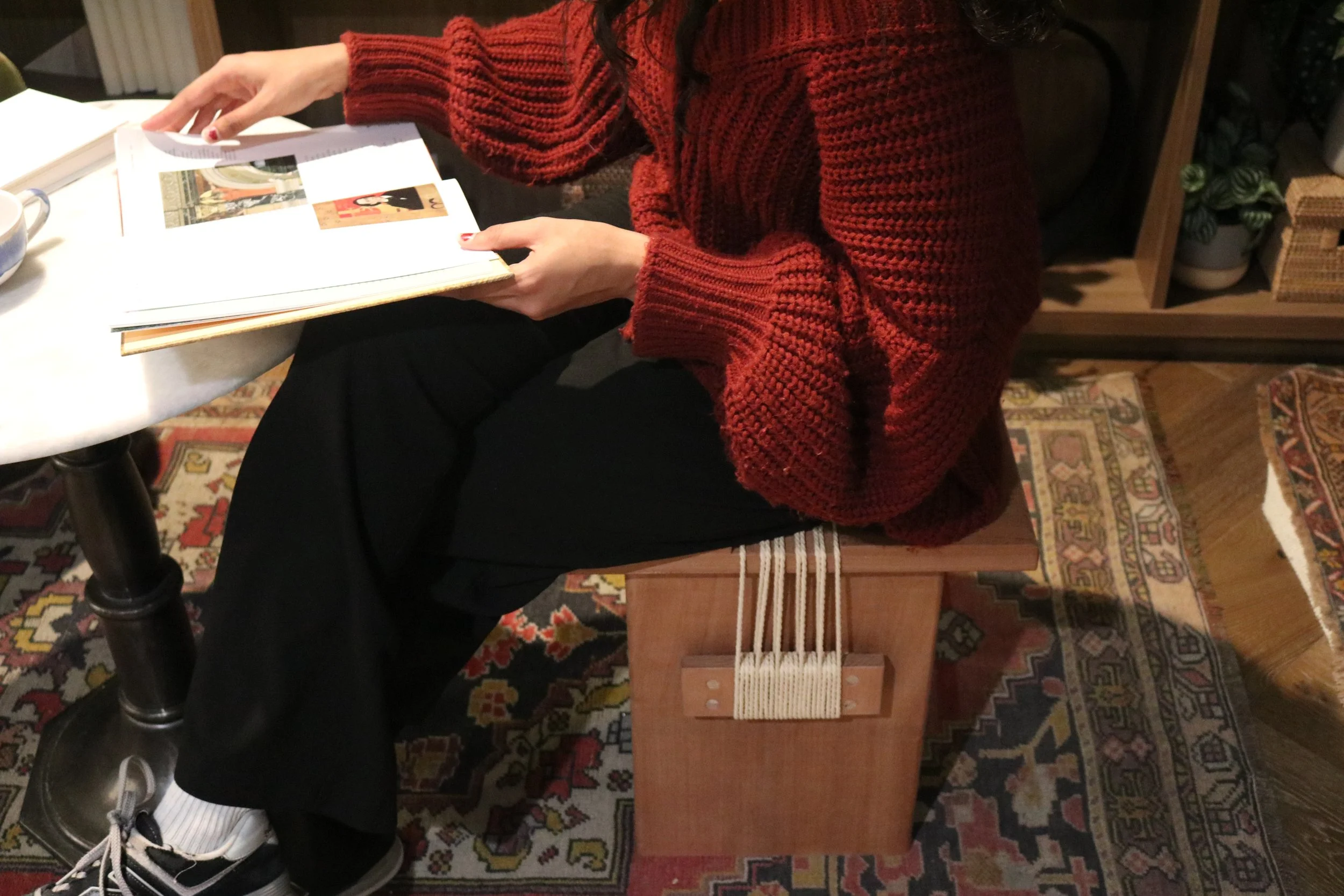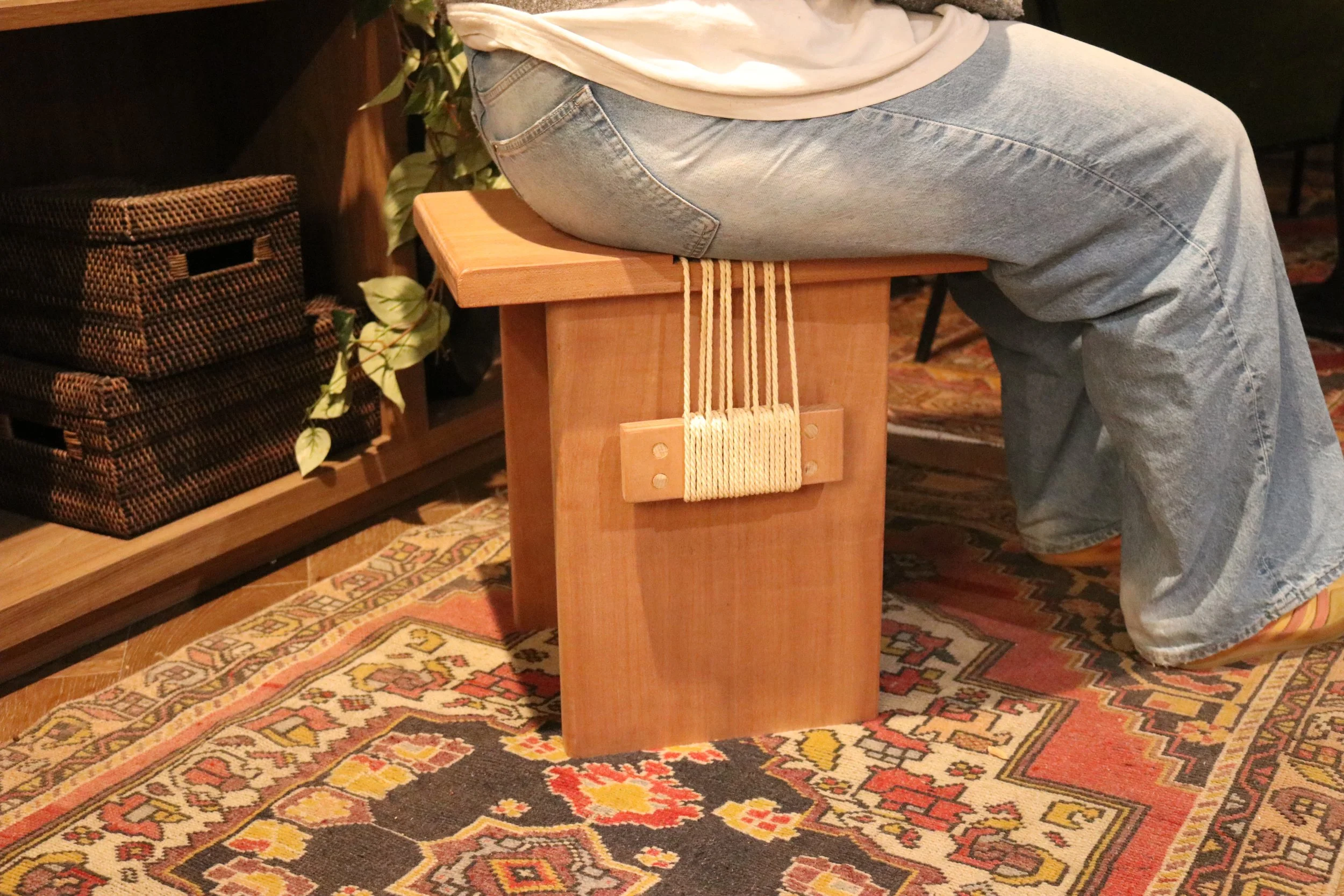
SABI
Sabi is a stool and side table designed for slower living in indoor spaces, combining sapele, maple dowels, and Danish paper cord.
Its sturdy structure is balanced by the delicate intricacy of the tightly woven paper cord. Curved edges form invisible lines that bind Sabi and flow downwards, anchoring Sabi in the space it occupies.
Timeline
10 Weeks
Role
Designer [solo]
Skills
CAD, Weaving, Woodworking,

I wanted my stool to feel timeless and unified, while taking a unique approach to traditional paper cord weaving.
I explored non-traditional weaving forms, drawing inspiration from fashion and accessories. A recurring theme was the use of exaggerated joinery or 'binding' elements, such as belts or dowel joints, which both unify the structure and guide the viewer’s line of sight. This concept became the foundation for my ideation.
Initial Ideation.
Shortlisted concepts.
Concepts were evaluated based on the following criteria: Is the weaving the focal point? Does the design capture interest? Can it be feasibly produced within four weeks?
✔ Weaving is focal point
✗ Lacks novelty - design doesn’t spark interest
✔ Interesting joinery
✗ Weaving is secondary focus
✔ Weaving is focal point
✗ Structural integrity
✗ Weaving not present
✗ Manufacturing concerns - ensuring precise alignment of all four legs with the seat
It’s all in the details.
Paper Cord
The paper cord structurally integrates with the stool, wrapping around its sides and forming an intricate woven pattern on the seat. A recessed inset ensures the cord sits flush.
Maple Dowels
Four dowels support the side handles, positioned two-thirds up to reflect the intended proportions. They pierce through the legs, visibly securing the central support.
Gallery [A collection of sketches, renders and graphics]
Setlock IV Transfer System
Machacha




